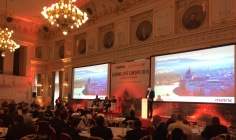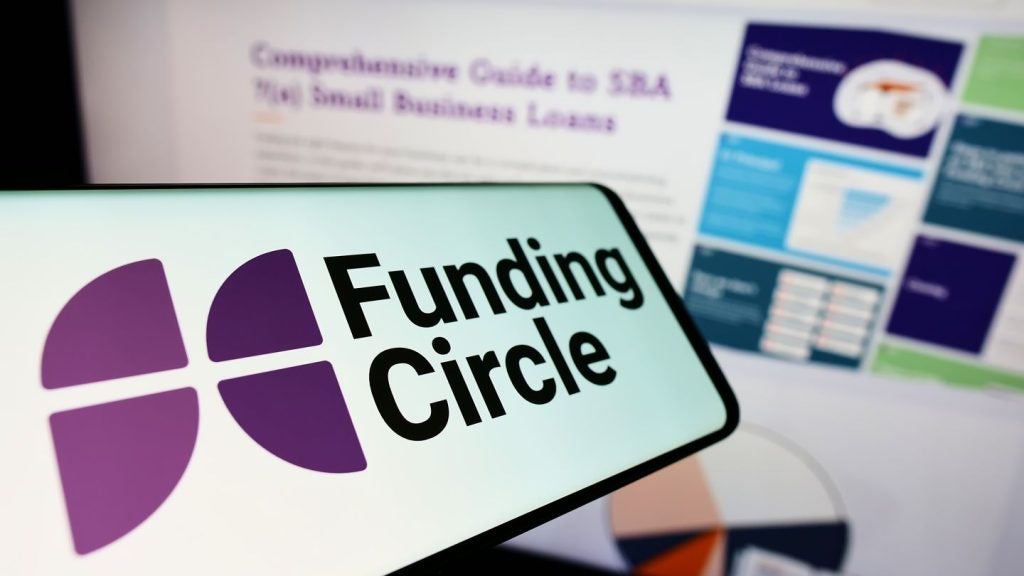
The Leasing Life conference this year saw a group of senior industry figures avow their faith in the resilience of the asset finance industry and the opportunities that lie ahead. Brian Cantwell reports
The Leasing Life conference 2015 strived to consider the main challenges to the leasing market from the boardroom’s perspective, without forgetting the everyday grassroots concerns of the commercial clients: SMEs, mid-to-large corporates, and vendors.
From my angle as editor, the year has been a case of drawing in themes I had seen emerge in conversations with the industry, and via communication channels that the major European and global lessors have been developing.
Clearly we are in a dynamically changing commercial environment, moving from a bank-led lending model to a service-driven, pay-per-use type arena, where knowledge and the skill sets of the lending parties are valued by clients, rather than a simplistic money-over-money type arrangement, which can lead to a race to the bottom on price points.
Technological advances have been a main disruptor for every financial services market, so considering the changes to commercial clients’ expectations, and the way they interact with their business partners for leasing, was important.
We talk about "writing paper" in the market but the expression will probably look to change as business clients expect a digital-only interaction in the future.
How well do you really know your competitors?
Access the most comprehensive Company Profiles on the market, powered by GlobalData. Save hours of research. Gain competitive edge.

Thank you!
Your download email will arrive shortly
Not ready to buy yet? Download a free sample
We are confident about the unique quality of our Company Profiles. However, we want you to make the most beneficial decision for your business, so we offer a free sample that you can download by submitting the below form
By GlobalDataI was struck by how every speaker seized on the urgency of change, and that there was an encouraging engagement with the evolving culture of the industry.
Therefore this year’s conference covered the rising competitiveness of the leasing markets and how to grow market share, and in a year where major player GE Capital reinvented itself and shed its regulatory burden by, in essence, becoming a captive, how to engage with captive finance partners by discovering the integration of financial processes in the product life cycle of a vendor.
We looked at technical disruption, online expectations of customers, and fixing the talent pipeline so that the asset finance industry’s profile could grow.
Somewhat controversially, it was understood that education of regulators as to the size of the industry might lead to more regulation, but would thereby draw more positive attention for attracting talent and credibility in the wider financial services world, and in the eyes of potential clients.
The complexity and range of the discussion was vast; the attempt here is to catch the dynamism of it.
Industry in 2015
Société Général global head of sales and marketing John Rees opened the conference and delivered a striking insight into the thinking that is pushing Société Général to innovate its market share rather than engage in an ultimately futile arms race on price points.
It was his assertion that the businesses had to change to meet their customers expectations and drive solutions based on interactions with clients.
Rees also considered the issue of identity, and whether leasing was a question of semantics.
"Let’s get back to this idea of competition, and innovation and change. I think we need to see ourselves as not just equipment financiers; one of our biggest problems, one of our legacies which holds us back is this word ‘leasing’," said Rees.
"Leasing is a word that is embedded in tangible assets, in tax breaks. The world doesn’t care about capital allowances for equipment; the world cares about finding innovative, creative solutions to enable their businesses to run more efficiently.
"Is [the word leasing] holding us back?"
Rees said lessors could also do more with the mountains of data that are produced through interactions with the customer. "You have to use the information that you have got; if you don’t, you are wasting a very valuable resource," he said, with reference to the development of new needs and products.
3 Step IT chief executive officer Carmen Ene focused on the steps businesses need to take to stimulate growth in leasing, drawing attention to the work done by the Leasing Foundation in the UK on the hidden size of the leasing industry.
"The leasing industry is underrepresented: the numbers are distorted," said Ene.
The current leasing market could be four times as big as its current global turnover. There’s 70% more market to develop which is not being tapped into by leasing industry players.
"The industry is much bigger than it appears, and the challenges are that we are not seeing what we are! Policymakers will see us differently and judge us differently were we to be better identified and recognised as being our true size," said Ene.
"I think we can do that by consolidating the associated data reporting. We need organisations that are consolidating their numbers and helping us to show everybody the contribution that the asset finance industry makes," said Ene.
Deutsche Leasing managing director Thomas Stahl gave insight into how the German economy derives real knowledge of the value of its middle-ticket market through unity.
"Deutsche Leasing is a member of the German savings banks. When you look to this group consisting of 580 companies, mostly the savings banks, or mobile banks etc, the Group has 580 million customers, with an annual business volume of 2.7trn."
Stahl added that customer reference flow was a clear part of the business strategy. Customers have a clear path from point of referral at the bank to their vendor partners, and with joined-up thinking for SMEs across Europe.
"Deutsche Leasing is the leasing subsidiary of the German banks. Customers referred to Deutsche Leasing from the Sparkassen Gruppe, are given access to other countries, as well as vendors. This is the clear strategic focus for Deutsche Leasing, and being a partner for SME companies in the production sectors in Germany, Austria or Switzerland."
Leasing as a service
Keith Softly from Lloyds gave an insightful speech on the reinvention of the bank-backed asset finance market, and how the crisis taught parents lessons on prudence and process and improved client-focus.
Softly said about post-crash bank asset finance: "Ultimately the question that many asset finance lenders that were owned by banks had to ask themselves or ask was, what do you call our non-core business?
"A lot of organisations had to wrestle with that question. To remain core [in the bank’s hierarchy] as an asset finance business, [you need to] be able to tell the story around how you stabilise and progress. For us, that meant managing bad and doubtful debt as a priority."
The changes in Lloyds were part and parcel of a better strategy for the industry, said Softly.
"We’ve seen a shift in culture, particularly mechanical incentive schemes are no longer available to us, and we’ve moved entirely to things called balanced score cards. At Lloyds, we measure whats and hows, so everyone is measured on what they do and how they do it.
"All of that is geared towards achieving that level of accountability all the way through the business. There’s also that much more focus on collaboration and working together, and diversity inclusion also a big priority," said Softly.
Culture shifts were part of the client expectation process for Genpact’s senior vice-president Diwakar Singhal, from a business that span out of rapidly changing lessor GE Capital in 2005.
"One of the trends we have been very aware of is online marketplace lending, online leasing, and digital – these are all adjacent spaces and they will have a profound impact on the lending arena" said Singhal.
"Certainly in the SME segment there are strong similarities with what is happening on the consumer side [with regard to access to services migrating online].
The pace of obsolescence within technology is a major challenge for lessors, added Singhal.
"Successful businesses in the Fortune 500 which had a half life of 10 years, are now shifting to five years. This rapid pace of change does cause some issues" said Singhal.
Additionally, lease originations are beginning to shift in volume away from banks and towards digital firms, said Singhal.
Genpact believes that part of the answer is to develop online channels for originations.
Lars Bang, commercial director at Nordea and Tim Albertsen, deputy chief executive officer at ALD Automotive agreed that online was an important area of growth for the asset finance industry, and saw joint ventures as a great way of sharing knowledge, giving a detailed behind-the-scenes look at how the joined-up fleet story worked for both companies.
"For us it was finding the right partner that was an important part of the venture, and an indirect sales channel that could take us forward and leverage the existing set-up", said Albertson.
Bang added that joint ventures could be a minefield but that the ALD/Nordea partnership had been a decade of experience.
"We said about two years ago, [former Nordea chief executive officer] Jukka Salonen and myself, it would not be bad for somebody to take a look at this model from the outside, and try to understand the factors of why some things worked and others did not."
Nordea and ALD asked one of the masters students from Helsinki University to base her Masters thesis on the joint venture.
Bang said her conclusions on the drivers for success were based around three details. "First, cooperation between equal partners, second with a shared view on business, how to meet customer’s risk appetite and threshold for profitability…creating sustainability in the commitment of the relationship, third building a foundation of trust, built on strong interpersonal relationships."
Partnerships, changes and technology
Guido Kessler, Cisco regional sales manager for Europe, said CIT had been investing heavily in the past year beyond its core network business, into data centres , data calibration and software and services.
"In this digital leasing market, you need to be very fast, very innovative, and very agile, otherwise you will be out of that market sooner than later," said Kessler.
"In some respects you have to lead that evolution of your customers. Investments into hardware, software and infrastructure enable the core business; but for true success you must understand the true needs of your customers: looking through them to your customers’ customer, and to be able to offer the IT models that add value."
Éva Partleton, financial solutions manager Cisco Capital, and Attila Illés, country sales manager at DLL Hungary, gave a indication of what’s needed in a partnership in the tech leasing market, and how leasing businesses must work together to harness the power of tech changes.
Illés said that innovation began by understanding the needs of the customer, in the same vein as Kessler’s insight into the paradigm shift of the leasing market, it was about relating to the digital instinct of customers.
"The customer wants to search for markets based on online users, so we cannot institute any random customer base, and any real business needs to have that flexibility," said Illés.
Partleton said that any new leasing products would have to be ‘colourful’ with a B2C, B2B or even the ability to host a service, so that the channels and market servicing went hand in hand with a partnership.
"For pay as you go based leasing; you can share the risk, you can share the revenue with your customer. This is something we can use in our balanced approach to generating cash flow. "
Talent
Peter Thomas, chief operating officer for the Leasing Foundation, said that the empathy required to understand customers’ needs was similar to the understanding required to attract young talent to seek out the leasing industry.
"It’s about making the industry more attractive… all the forums that we have undertaken have driven our thinking about education, training, and development," said Thomas.
The Foundation has been hard at work pushing its leadership development programme, FutureLeaders, which is distinct from Leaseurope’s programme in terms of form and aims.
It has postgraduate education in cooperation with Falmouth University; and the diversity initiative to promote women in leasing.
With initiatives and concepts like these, the asset finance does have a collective identity and prospect of a unified future.







